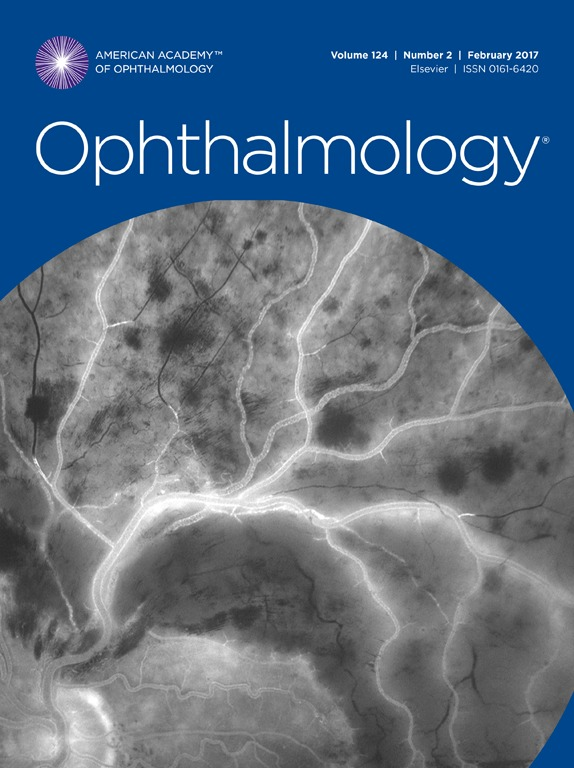Association between Pentosan Polysulfate and Subsequent Maculopathy
IF 13.1
1区 医学
Q1 OPHTHALMOLOGY
引用次数: 0
Abstract
Purpose
To determine the association between pentosan polysulfate (PPS) use and the subsequent development of maculopathy in an Asian population.
Design
A nationwide, population-based retrospective cohort study using the Health Insurance Review and Assessment Service database.
Participants
A total of 103 553 individuals in the PPS user group and 205 792 individuals in the PPS nonuser group, all newly diagnosed with cystitis between 2009 and 2020.
Methods
The association between PPS use and maculopathy was evaluated using a time-dependent Cox proportional hazard model. Additionally, 2 sensitivity analyses were conducted by defining PPS users as individuals with an observation period over 6 months from the initial prescription or those with a cumulative dose exceeding 9 g, using the same analysis.
Main Outcome Measures
The outcome measures included the hazard ratios (HRs) representing the association between PPS use and maculopathy.
Results
Use of PPS was associated with an increased risk of subsequent maculopathy in univariate (HR, 1.7; 95% confidence interval [CI], 1.66–1.75) and multivariate analysis (HR, 1.34; 95% CI, 1.31–1.38). These results were also confirmed in 2 sensitivity analyses. The mean cumulative dose of PPS for the cohort was 37.2 ± 76.7 g.
Conclusions
In this nationwide cohort study involving an Asian population, individuals with cystitis using PPS exhibit an increased risk of developing subsequent maculopathy.
Financial Disclosure(s)
The author(s) have no proprietary or commercial interest in any materials discussed in this article
多硫酸戊聚糖与后续黄斑病变之间的关系:韩国一项全国性人口研究的启示。
目的:确定亚洲人使用硫酸戊聚糖(PPS)与随后发生黄斑病变之间的关系:设计:利用健康保险审查与评估服务数据库进行的一项全国性人群回顾性队列研究:2009年至2020年间新诊断出膀胱炎的103553名PPS使用者和205792名PPS非使用者:使用与时间相关的 Cox 比例危险模型评估了使用 PPS 与黄斑病变之间的关系。此外,还进行了两项敏感性分析,将 PPS 使用者定义为自首次处方起观察期超过 6 个月的个体或累计剂量超过 9 克的个体,并采用相同的分析方法:主要结果指标:结果指标包括代表使用 PPS 与黄斑病变之间关系的危险比 (HR):结果:在单变量分析(HR,1.7;95% 置信区间 [CI],1.66-1.75)和多变量分析(HR,1.34;95% 置信区间,1.31-1.38)中,使用 PPS 与随后发生黄斑病变的风险增加有关。这些结果在两项敏感性分析中也得到了证实。队列中 PPS 的平均累积剂量为 37.2 ± 76.7 克:在这项涉及亚洲人群的全国性队列研究中,使用 PPS 的膀胱炎患者继发黄斑病变的风险增加。
本文章由计算机程序翻译,如有差异,请以英文原文为准。
求助全文
约1分钟内获得全文
求助全文
来源期刊

Ophthalmology
医学-眼科学
CiteScore
22.30
自引率
3.60%
发文量
412
审稿时长
18 days
期刊介绍:
The journal Ophthalmology, from the American Academy of Ophthalmology, contributes to society by publishing research in clinical and basic science related to vision.It upholds excellence through unbiased peer-review, fostering innovation, promoting discovery, and encouraging lifelong learning.
 求助内容:
求助内容: 应助结果提醒方式:
应助结果提醒方式:


